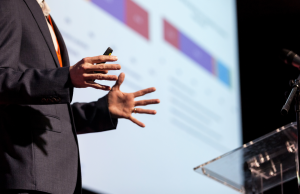Charitable giving is expected to increase 4.1% this year and 5.7% in 2022, according to projections from the Lilly Family School of Philanthropy at IUPUI in Indianapolis, Ind.
In a blog post titled, “The Outlook For Charitable Giving,” researchers at the Lilly School predict increases in all four major sources of giving in 2021 and 2022, with the biggest jumps next year from estates and foundations:
- Individuals and households — 6% and 3.9%, respectively;
- Foundations — 1% and 8.8%;
- Estates — 1.1% and 11.9%; and,
- Corporations — 4.3% and 6.4%.
Growth rates are based on predictions for giving in inflation-adjusted 2019 dollars using 2020 as the base year.
The Lilly School partners with the University of Pennsylvania Wharton School of Business, which provides data using the Penn Wharton Budget Model for select economic variables used in producing the estimates.
After the highly unusual 2020, Americans should expect broad philanthropic growth in the coming years, according to the researchers. Of course, many factors could impact the economic outlook, not the least of which would be the continued rollout of the coronavirus vaccine. Historically, giving tracks with the S&P 500 so market volatility also could impact forecasts.
“This projection, really, is based on overall economic conditions, and we all understand that we’re all facing uncertainty, not just economic but health conditions as a country and the world as a whole, with the vaccine rollout,” Una Osili, Ph.D., associate dean for research and international programs and professor of economics and philanthropic studies at the Lilly School, told The NonProfit Times. “Some of this recovery depends on the ability to resume more regular business conditions. And some of that depends on widespread availability and diffusion of vaccines,” she said.
The projections are a “best-case scenario,” if GDP recovers in 2021 as is expected by the Congressional Budget office (CBO) and others.
“In terms of overall growth in philanthropy, we do have to be concerned that underlying models show recovery but that recovery certainly is not expected to be broad-based,” Osili said. “Some sectors of the economy are recovering faster than others, and some households have been more affected by the pandemic, not just their health conditions but also their incomes, their wealth, their ability to access employment,” she said.
“This is the extension of the K-shaped recovery we heard a lot about in 2020 where some American workers are able to work from home, work remotely, and their incomes, their wealth, if not grown, have at least stayed relatively stable through 2020-2021,” Osili said. “However, for some lower-income workers, lower-skilled workers, their economic fortunes, their incomes, their wealth, have not maintained their levels during the pandemic. That is something that 2021 is likely to see some of those trends continue,” she said.
Estate giving is the most volatile source of giving. Sharp increases tend to be driven by very large estates, according to Osili, so if a few very large gifts one year push up the percentage, that might not continue.
Since the pandemic, foundations have shifted how they approach grantmaking, whether reducing requirements for grantees, paying out more than they have in the past, or providing unrestricted dollars. “Some projections have to be also put into context, that we are in a very unprecedented environment and the foundation sector has stepped up at the community level but also nationally we’re seeing those same trends,” Osili said.










